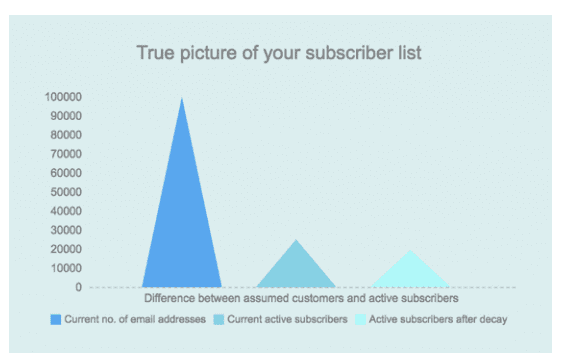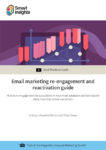75% of your email list is inactive and therefore useless. You need to win them back.
Reactivation is aimed at attempting to reintroduce lapsed subscribers to your content and re-engaging their interest in your brand, most commonly by creating a specific strategy and utilising specific content that aims to bring people back into your pool of active customers.
There are many elements and variables involved in the process of creating an email marketing reactivation strategy, but every brand that uses email marketing as part of their digital marketing strategy should look to build in an email reactivation strategy, as its potential to create impact for brands in any sector, should not be underestimated.
Why focus on reactivation and re-engagement?
75% of your email subscriber list may be inactive. This is a worrying statistic, as it means that three quarters of your subscriber base may not currently be engaging with your marketing content. Many of these might as well be unsubscribers, unless you re-engage with them to in order to bring them back to your brand’s content.

Here are some of the reasons why subscribers may not be engaging with your email marketing:
1. Content not connecting
2. Generic subject lines
3. Email response falls due to emails being blocked or spam filtered
4. Circumstantial reasons
Common mistakes with email marketing reactivation
Like with any marketing strategy, there are potential pitfalls and mistakes that can be made if you don’t put adequate time and resources into the planning, testing and monitoring of your strategy and the performance of your campaigns. Here are the most common mistakes with email marketing reactivation:
- Waiting too long to try reactivating subscribers – be proactive and re-engage with customers before they are too disengaged to reactivate or before they potentially unsubscribe.
- Making the wrong assumptions – assuming the only way to get subscribers re-engaged with you brand is with incentives.
- Choosing expensive solutions – following on from the previous mistake, brands tend to give away costly offers rather than testing more cost-effective reengagement tactics and incentives, such as free delivery.
- Not doing the required testing – if you are not doing robust testing during your reactivation, then you are falling back into the guesswork with your content that may have led to subscribers lapsing in the first place.
- Setting it and forgetting it – like with many marketing strategies, the set and forget mindset is such a common and avoidable mistake. Implementing and automating your reactivation strategy is not the job done, as it needs constant monitoring, analysis and optimisation to make it sustainable.
This article has provided a very basic start to some of the key concepts of email marketing reactivation. To learn how to avoid the mistakes and get more details as to why your customers aren't engaging, as well as examples of successful re-engagement campaigns, download our Email Marketing reactivation and re-engagement guide.
Download Expert Member resource – Email Marketing reactivation and re-engagement guide
The aim of the guide is to help marketers who are engaged in email marketing campaigns to tackle the issue of inactive email subscribers. Inactive email subscribers don't have to be lost opportunities and there are ways to reengage those users and potentially turn them into paying customers or clients..
Access the Email marketing re-engagement and reactivation guide








